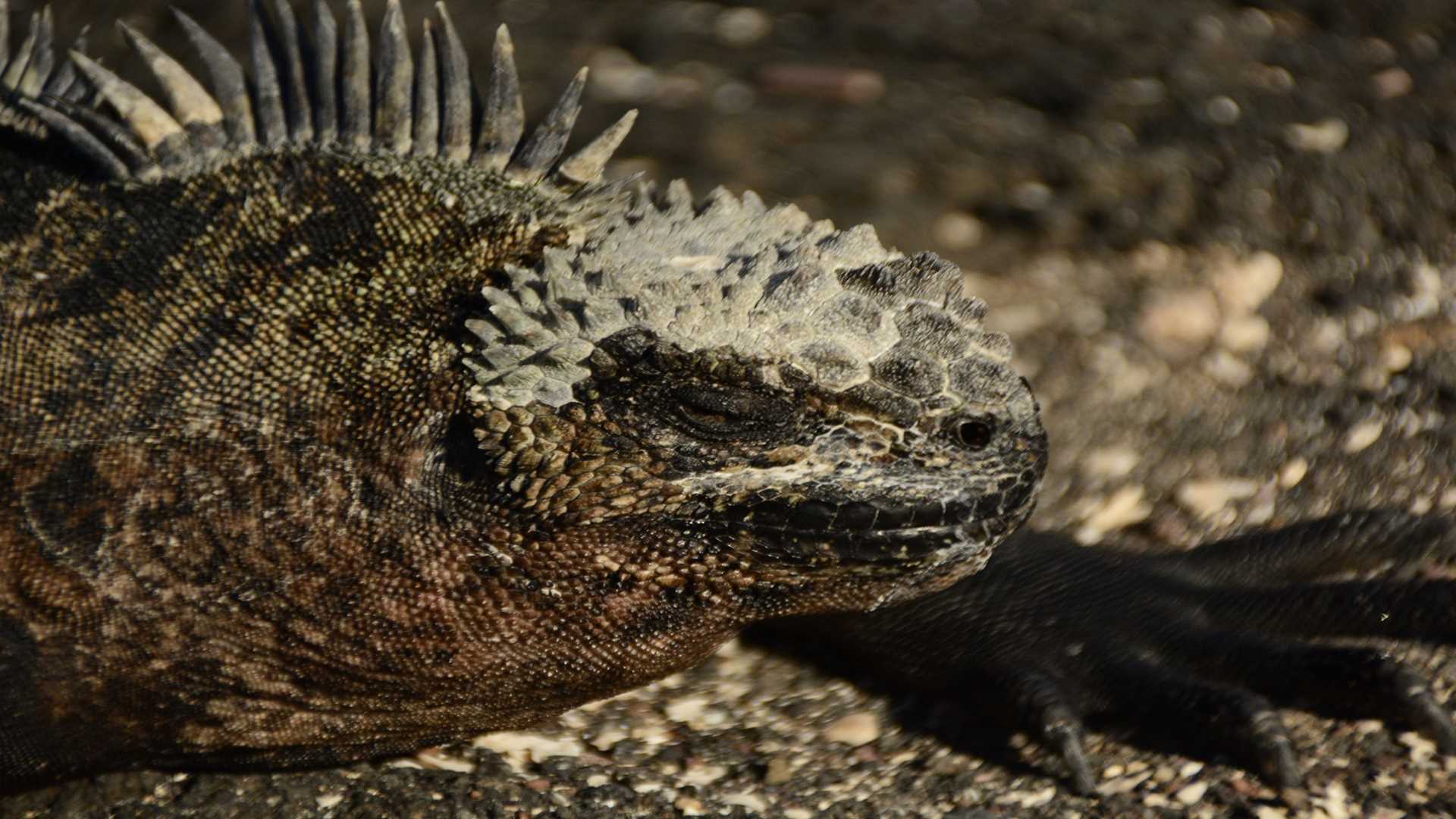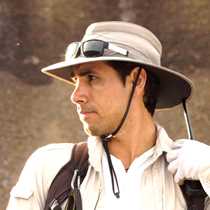We wake up with the first light of the day and the National Geographic Islander is navigating slightly north of the equator, around the “head of the seahorse”, as we call the northern part of Isabela Island. The landscape is very barren and quite volcanic and it seems as though we have gone back in time several million years to the beginning of the formation of the Galapagos. We observe a flock of blue-footed boobies fly over the ship, then some sea lions going out to fish, and then suddenly a triangular fin breaks the surface of the water and someone screams SUUUNN FIIIISH! The creature breaches and shoots into the air for a few seconds. It was quite a site!
As the National Geographic Islander continued navigating towards the equator, a pod of dolphins approached the ship, so our guests had an incredible opportunity to observe wildlife and landscape this morning. As we crossed the equator, our guests gathered to see the “line” being held by the naturalists on the bow of the ship. What a fantastic morning and we haven’t even arrived to our first visitor site yet!
The ship anchored in a very secluded bay at Punta Vicente Roca at the snout of the seahorse, as it were. The steep walls that make up the southern flanks of Ecuador volcano rise in front of us and surround us. Amazing volcanic features are observed as we go for a coastal exploration where we spot several green turtles, flightless cormorants, and Galapagos fur seals. After the Zodiac ride we come back to the ship and prepared for snorkeling. Our guests had the opportunity to observe the underwater world at this location, including more Pacific green turtles, flightless cormorants, and the Galapagos penguin were seen during the snorkeling session. It was an incredible morning at this magical site.
After a great lunch we offered a talk on Oceanography to better explain the weather phenomena on the Island and after 3 pm, we prepared for the next adventure on Fernandina Island, the youngest on the surface. We had a dry landing and from the moment we landed we were welcomed to the island by a “mess” of marine iguanas. The place seemed as if it had been recently covered by dark lava, a very dramatic landscape inhabited by very odd and unique life forms. We managed to get closer to the petrified lava flows to observe hundreds of marine Iguanas. We continued walking and in the distance we spotted the Galapagos hawk looking for its meal of the day. At the end of hike we got to a place that serves as a nesting and mating area for the flightless cormorant. We were able to observe the birds up close and witness the full courtship of this very odd bird. It was a wonderful day on the western side of the Galapagos.







